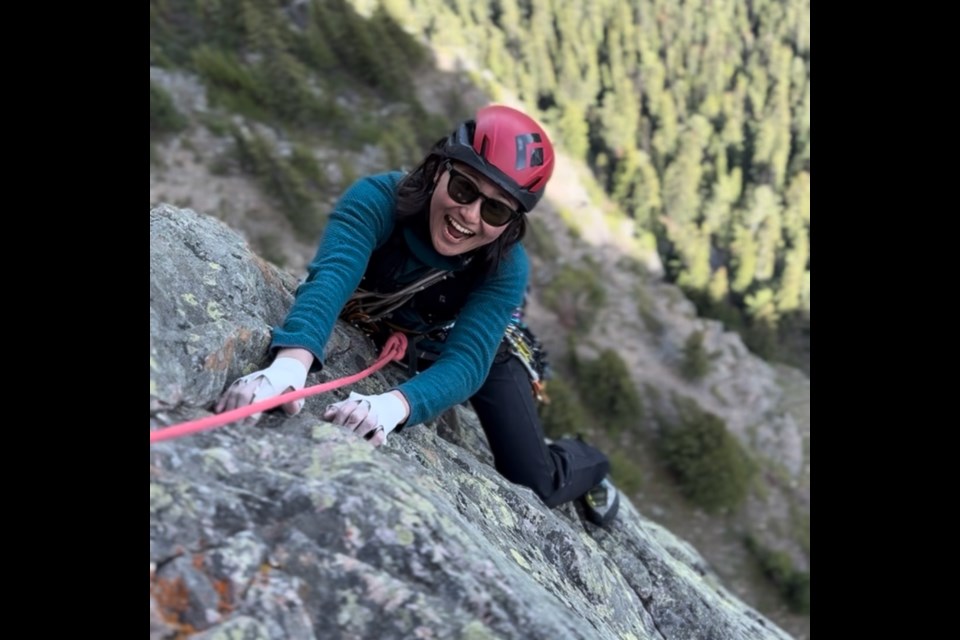Sean Renwick and Izumi Uno had just finished rock climbing on Squamish’s Malamute—a beloved 10-hectare area with great views and more than 30 climbing routes—in the early afternoon on July 26. They were about to leave to grab some lunch when their day took an unexpected turn.
Nearby, a paraglider suddenly crashed into the rockface.
The couple had seen the pilot struggling in the gusty wind while they were climbing, but otherwise hadn't paid much attention to him, Renwick recalled.
Luckily, the climbers, who were in town from Canmore, Alta., to camp and climb, are trained for emergencies.
Renwick has worked as a paramedic and mountain guide, and Uno is on ski patrol.
The two swung into action to help the man.
"His kite hit a tree. It just caught a tree, and he hung up for a few seconds. And, in that moment, we kind of saw a plan that we could make to quickly secure ourselves to the mountain and get down to him and then [secure] him to the mountain," Renwick said, noting that had the kite’s precarious snag on the tree been released by the strong gusts of wind, the unconscious man may have continued falling to his demise.
Another piece of luck was that there were two climbing anchor bolts right where the paraglider landed.
"I got to him first, and Izumi was building anchors, and then also calling 911," said Renwick.
"I attached him to the mountain and quickly assessed him [with] a rapid body survey, to see what was going on, so we could convey that to emergency services over the phone.
Then we just stabilized him as best as we could on the side of the wall and waited for backup."
Members of Squamish Fire Rescue, Squamish Search and Rescue (SSAR), BC Emergency Health Services and Squamish RCMP were involved in the rescue.
Renwick said it was impressive how quickly advanced life support (ALS) help arrived.
A spokesperson for Squamish SAR told The Squamish Chief that Squamish Fire Rescue and SSAR "then worked together to complete the technical rescue, with both rope and [Helicopter External Transport System] HETS techniques, to extricate the subject."
A spokesperson for the Mounties told The Squamish Chief the paraglider ultimately had non-life-threatening injuries.
SSAR noted the significant impact the climbers’ actions had.
"The quick response of the climbers in this case was instrumental in supporting the subject, Squamish Search and Rescue and Squamish Fire Rescue by offering equipment and communication on scene at the beginning of the task," the spokesperson said.
All told, it was five or six hours before the climbers were on their way again.
Telling The Squamish Chief about the incident, the pair took it in stride.
If you are a bystander
Asked for advice for other folks who may find themselves bystanders to an emergency, but who perhaps don't have their level of training, Renwick and Uno stressed not to hesitate to call 911.
"Call for backup," Renwick said.
The pair also recommended that people who recreate in the backcountry take a basic wilderness first aid course so they know how to help should the need arise.
Squamish Fire Rescue Deputy Chief Shaun Swerdfeger reiterated that bystanders should ensure they are safe and then call 911.
"If bystanders are in a safe space and are willing and able to assist without risking their personal safety, they can try and assist where needed," he said. "Sometimes, all it takes is for someone to stay with the person who is injured for support. Another way to help is to assist with the location of the injured person. Having people show first responders to an injured person can be very helpful, saving valuable time," he added.
"When enjoying the great outdoors in the Sea to Sky, we recommend people plan and prepare appropriately. Conditions can change quickly, and the terrain in our area can be challenging."
The SSAR spokesperson added that after calling 911 immediately, bystanders should continue to monitor their phones.
"We will be trying to contact you for further information about the location and condition of the subject. When we are executing a rescue, it is very helpful if bystanders can give us space to work, especially when helicopters are required."
For more ways to be safe in the backcountry, AdventureSmart has plenty of resources.




